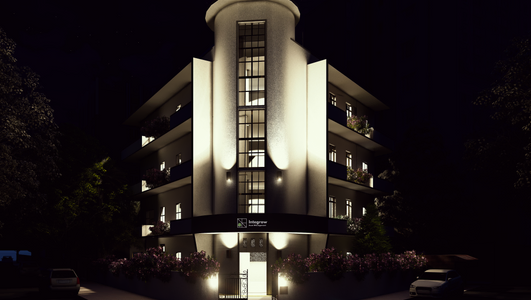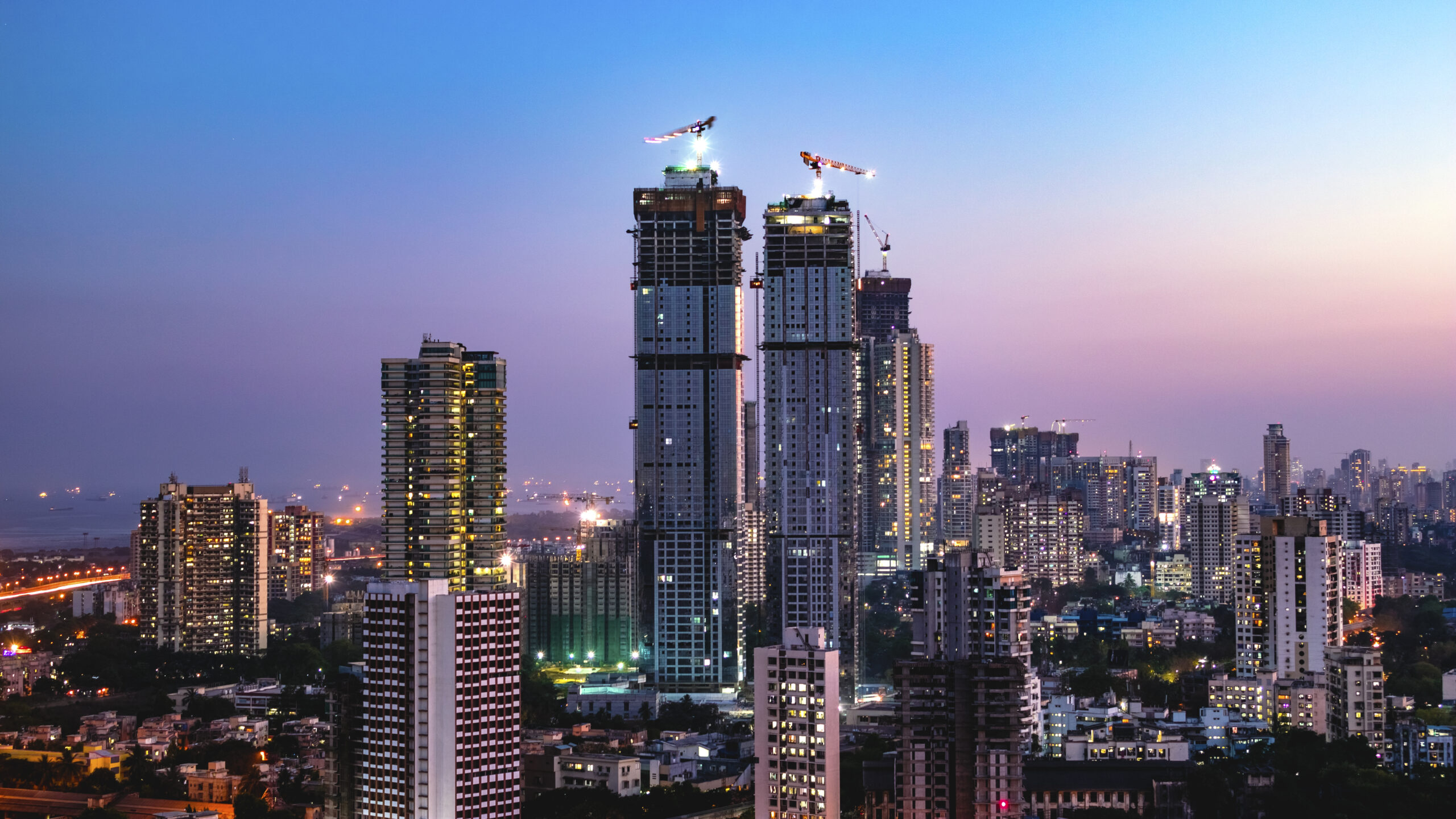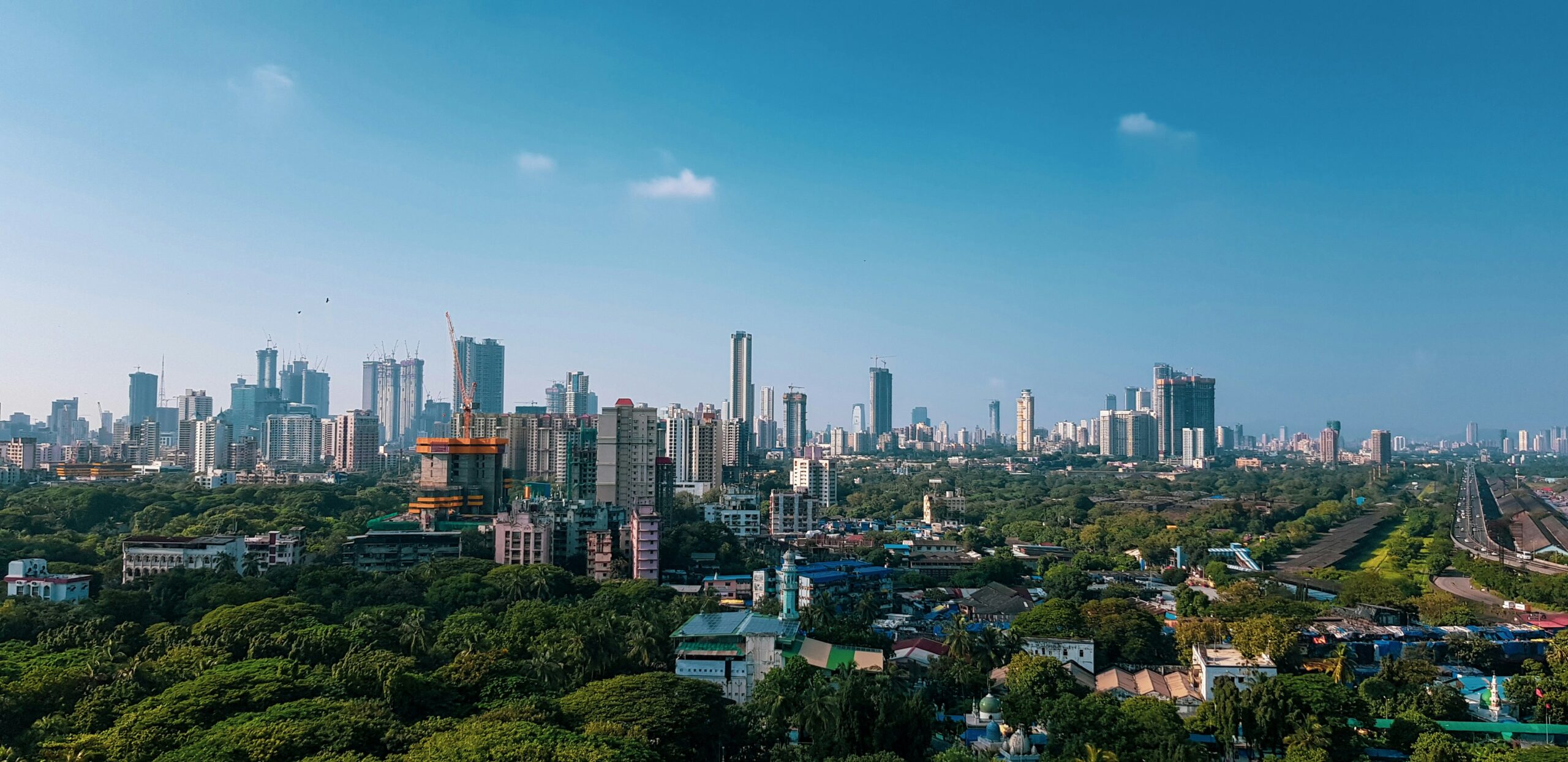An old, neglected Art Deco building receives a new lease of life, thanks to the collaboration between a team of architects and an asset management firm that has made it its new home. And it’s inspiring a mini transformation of the neighborhood.

“Yadav says the idea to move into an Art Deco building presented a great opportunity to train focus on sustainability and create transformative change using restoration. As an extension of the office restoration, the company, in collaboration with the K Ward office of the BMC, also restored the Juhu Traffic Island not too far away.”
Four years ago, Niket Deshpande, director at System Architects India, decided to set up his office in one of the abandoned quarters of Parel. That too, in a derelict building that had earned the moniker, “khandar of Bamboo Gully” among locals. Built in the 1940s, Adeshwar Mahal is a ground plus three storied Art Deco building, inhabited by two tenants. “The landlord was least interested in the structure, and there was animosity between the tenants and him. In fact, he was planning to raze it since it was a headache to maintain. At my insistence, he [the landlord] agreed to rent one of the eight residential units to me for a year. We secured permission to make it our commercial office,” As a trained conservation architect, Deshpande saw potential in a structure where most saw neglect.
Adeshwar Mahal is turning heads and how—the poised, elegant facade is a far cry from its former shabby avatar. The building belongs to one of the last phases of the Art Deco movement, says Deshpande. “So, it doesn’t have too many ornamentation elements, but it has the character of a quintessential Art Deco structure, including a spiral staircase, corner balconies and tile choices.” The term, Art Deco, refers to a design period that was popular in Europe in the 1920s and ‘30s. Its aesthetic is a careful balance of opulence and practicality. The idea of a complete restoration, Deshpande tells us, came about last August when Ramshrya Yadav, founder and CEO, Integrow Asset Management, an alternate investment fund that focuses on real estate, visited their office for an Independence Day event. “He was looking for an office space, and his primary concern was whether the building [Adeshwar Mahal] was sturdy enough.” Integrow’s design brief was simple: a welcoming, non-intimidating space that felt like home. This connected well with the core competency of Deshpande’s firm, which was earlier involved in the making of Jaya He GVK Museum at the T2 terminal of the Mumbai International Airport. After studying the company’s journey and brand identity, they presented a restoration proposal. “We wanted to do a surgery [of the structure], but just the right amount so that we didn’t mess with the original aesthetics and character.”
They decided to target the lightwell, which, in architectural terms, refers to an unroofed external space within the volume of a large building that can be used to channel daylight into areas that would otherwise stay unventilated. Many old buildings have a central duct, which often degenerates into a community garbage bin, he observes. The one at Adeshwar Mahal was no different. The central duct area was filled with three feet of muck. “It would stink, and nobody would open the windows because of the stench. The challenge was to figure what to do with this unused space. We planted trees and managed to funnel in fresh air and natural light. It’s now become one of the most sought-after pockets in the building.” The old, rustic flooring made of Kota stone, a fine-grained, water-resistant variety of limestone from Rajasthan, was polished. They also decided to spruce up the name Adeshwar Mahal. They kept the intervention minimal—there are exposed light fixtures, open wirings and no false ceilings. To reduce cabling in an old building, they resorted to technology. “We installed smart speakers and voice assistant products. Wherever we had to do paneling, we restricted it to a single wall which already had plug points. The idea was to not over-engineer.”
At the time of restoration, the team faced difficulties securing permission for scaffolding since government offices weren’t operating regularly during the lockdown. “It would have taken us months to get the go-ahead. We had to find a way around it without violating rules. So, the workers tied paint rollers to bamboo sticks and from the first floor, they would paint the second floor, and so on.”
The two tenants living in the building since the 1940s were initially wary of the new changemakers trooping in. On securing the old blueprint of the structure, Deshpande was surprised to discover that there was provision made for the lift duct, which he says was far sighted for the time. “We have got permission from the PWD for the lift, and now the tenants can’t thank us enough. Most of them are old and climbing the stairs was becoming a challenge.” However, until that came into being, the team had to find ways to motivate people to take the rare circular staircase. So, they divided the staircase that goes up to the terrace into four ‘stories. Ground to the first floor has a walk-in gallery featuring frames of legendary financiers and strategists like Chanakya, Raja Todar Mal from Emperor Akbar’s court and German philosopher Karl Marx. Above, are exhibited archival photos of currencies followed by pictures of six bank buildings that have been iconic structures. The last floor—Deshpande’s favorite—is a tribute to six ground-breaking architects who worked on Indian soil and made a difference, including Lawrence Wilfred “Laurie” Baker, a British-born Indian architect, renowned for his initiatives in cost-effective energy-efficient architecture and designs that maximize space, and Swiss architect Charles Edouard Corbusier (Le Corbusier), who was instrumental in designing Chandigarh, one of India’s first planned cities.
For Deshpande and his team, “every challenge became a story and every process, a project”. Because the building has a certain character, it prompted them to reimagine and focus on new ways to present traditional shapes. For instance, the four rooms became four cabins, and the passages, connecting pathways to the cabins. As a second-generation architect—his father was chief architect with MSEB—Deshpande feels architecture sometimes becomes egoistic. “And I say this with a lot of thought. Because one wrong move, and we end up disturbing the ecology. Let’s say, I get a wooden window and I’m not doing it with a purpose, I’m actually destroying the setting. Some buildings are a manifestation of the architect’s ego— ‘I can make the building taller and broader’—and somewhere along the way, they lose the plot. We were careful not to do this.”
At Adeshwar Mahal, the four-feet corner balconies were enclosed by grills, a familiar sight in the city. These were knocked down to allow the balconies to breathe, the tints on the windows were also removed. These have now turned into spaces for morning meetings and chai banter.





